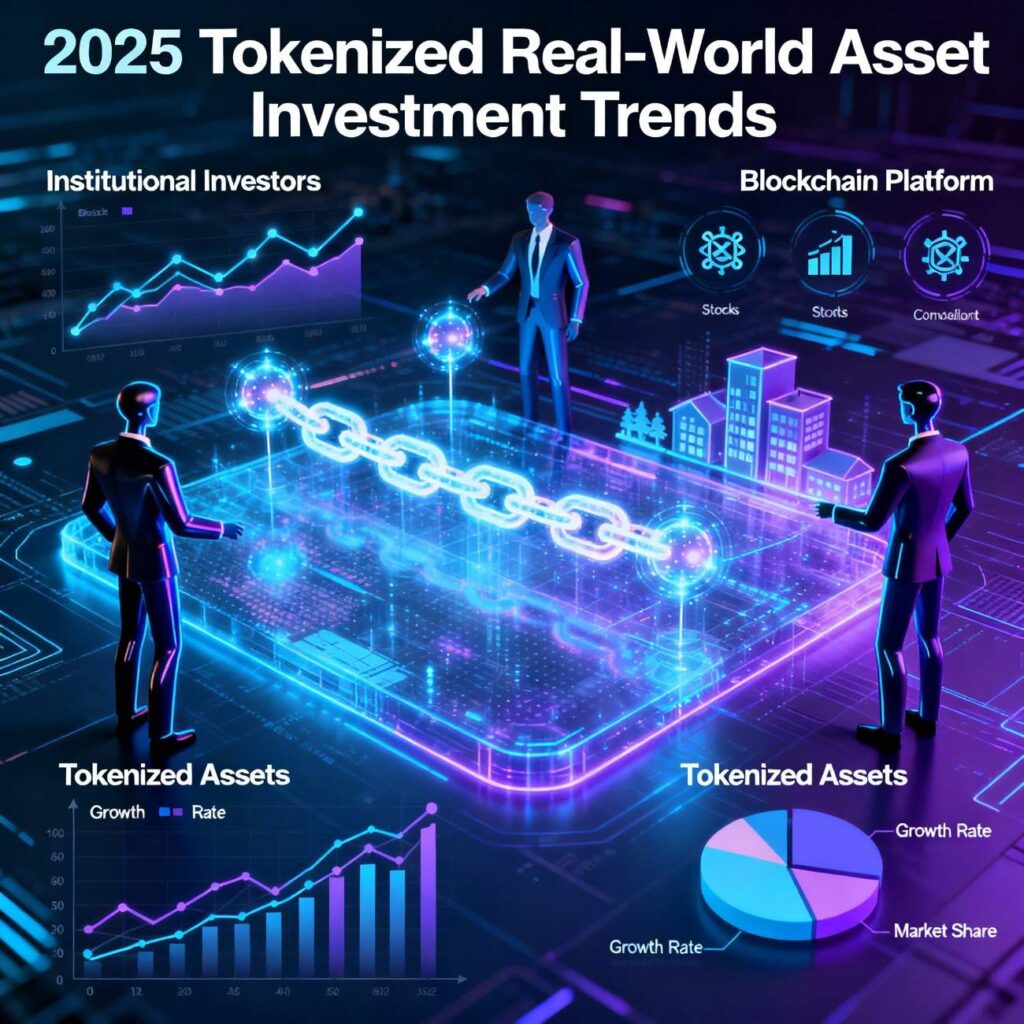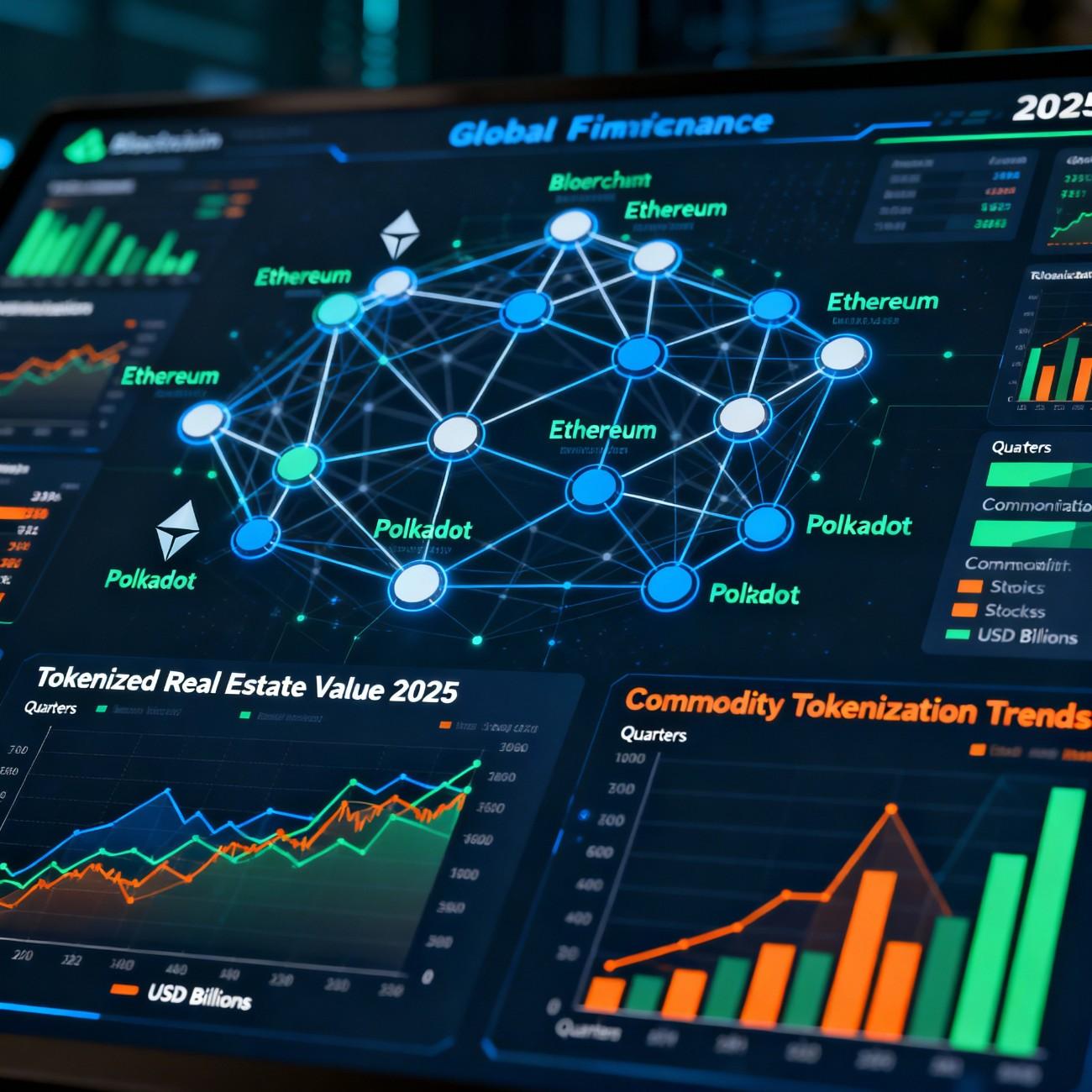Tokenized Real-World Assets 2025 in Focus
Tokenized real-world assets are reshaping global finance. In 2025, the focus is on how blockchain turns physical and financial assets into digital tokens that can be traded instantly and securely. The shift is not about hype, it’s about access, liquidity, and transparency. Financial institutions, asset managers, and regulators are all moving fast to understand this new framework. Tokenized real-world assets are becoming a global priority as markets evolve.
Why Tokenization Matters in Global Finance
Tokenization gives investors fractional ownership in assets that were once illiquid. Real estate, corporate bonds, and private credit can now be digitized and divided into smaller, tradable units. This makes investment access broader and more efficient. The market for tokenized real-world assets in 2025 is expected to exceed $20 trillion in potential value, driven by blockchain finance innovation and institutional adoption.
How Real-World Assets Are Moving On-Chain
Financial institutions are building digital infrastructure that connects blockchain to traditional finance. BlackRock and JPMorgan are leading tokenization initiatives through their RWA projects. Bonds, money market funds, and real estate portfolios are being placed on permissioned blockchains. Smart contracts manage compliance and settlement automatically. This new architecture reduces manual processes and settlement delays, cutting operational costs across markets.
Institutional Adoption and Market Growth Drivers
Institutional investors see tokenized real-world assets as a way to improve capital efficiency. They can move funds faster between asset classes and regions. Demand for stable yields is driving interest in tokenized bonds and loans. At the same time, regulators in the US, EU, and Asia are setting clearer rules for blockchain-based assets. These combined forces make 2025 a key inflection point for tokenized markets.
Market Transformation Through Tokenized Real-World Assets 2025
The rise of tokenized real-world assets signals a deeper transformation across the financial sector.
How Financial Institutions Use Tokenization
Banks and asset managers are testing tokenized fund structures. They issue digital shares backed by real assets, which can be traded in real time. Tokenization also allows cross-border settlements without long clearing processes. Institutional adoption of blockchain is growing as these pilots expand.
The Role of Blockchain and Smart Contracts
Blockchain ensures transparency, while smart contracts automate settlement and compliance checks. Each tokenized real-world asset carries embedded data that verifies its ownership and risk profile. This structure reduces fraud and enhances investor confidence. Blockchain finance 2025 is no longer theoretical; it is operational at scale in major institutions.
Benefits for Banks, Asset Managers, and Investors
Banks reduce costs. Asset managers gain liquidity. Investors get faster access and diversification. Tokenized bonds and real estate lower the entry barrier for smaller investors. The entire financial system benefits from improved transparency, faster transactions, and programmable compliance mechanisms.
Global Regulatory Landscape in Tokenized Real-World Assets 2025
Regulation is shaping how tokenized real-world assets evolve globally.
Key International Standards and Compliance Trends
The International Organization of Securities Commissions (IOSCO) and Financial Stability Board (FSB) are developing global frameworks for tokenized markets.

Their focus is on custody, disclosure, and market integrity. Asset tokenization regulation is now seen as a core part of digital asset oversight.
US, EU, and Asia Regulatory Frameworks
The US is tightening digital asset reporting rules through the SEC and CFTC. Europe’s Markets in Crypto-Assets (MiCA) regulation covers asset-backed tokens. Asia is moving even faster, with Singapore and Hong Kong promoting institutional-grade tokenization platforms. These regions are competing to attract investment and innovation.
The Rise of RegTech and Blockchain Oversight
Regulatory technology is critical for compliance automation. RegTech tools powered by AI track token movements, verify KYC data, and flag suspicious activity. Blockchain oversight is no longer optional. It is a core function of global finance regulation 2025.
Tokenized Assets, Risk Management, and Liquidity
Risk management defines the success of tokenized real-world assets.
How Tokenization Improves Transparency and Efficiency
Every tokenized asset can be tracked in real time. This visibility improves reporting accuracy and market integrity. Investors can verify the backing of each token through on-chain proofs. Transparency enhances trust, especially in markets that have struggled with opacity.
Managing Credit and Counterparty Risks
Smart contracts enforce risk parameters automatically. Tokenization does not remove risk, but it makes it more measurable. Credit exposures can be monitored dynamically, reducing hidden leverage. Counterparty risk declines as settlement moves from T+2 to near-instant.
Integrating RWA into Traditional Finance
Traditional banks are integrating tokenized assets into existing infrastructure. They are using private blockchains that connect to public networks. This hybrid model allows compliance with current laws while enabling innovation. It creates a bridge between regulated finance and decentralized systems.
Investment Opportunities in Tokenized Real-World Assets 2025
The tokenization trend is creating real, scalable investment opportunities.
Where Institutional Investors See Growth
Institutional investors are increasing exposure to tokenized bonds and funds. They see tokenized infrastructure as a long-term growth engine. Liquidity, automation, and efficiency attract capital. Asset tokenization also offers new portfolio diversification.
Tokenized Infrastructure and DeFi Collaboration
Decentralized finance and institutional finance are starting to converge. Tokenized real-world assets serve as collateral in DeFi protocols, increasing yield potential. This collaboration connects liquidity pools to real economic assets. It brings traditional financial instruments into digital ecosystems.
Strategic Risks and Competitive Landscape
Despite growth, there are risks. Cybersecurity, regulatory fragmentation, and market interoperability remain challenges. Competition is intense among platforms building tokenized asset infrastructure. Success will depend on regulation, transparency, and scalability.
Regional Perspectives on Tokenized Real-World Assets 2025
Regional markets are evolving differently but share a common goal: modernization.
US and Europe’s Institutional Blockchain Projects
In the US, major financial firms are tokenizing treasury funds and corporate bonds. Europe is focused on regulatory clarity under MiCA and pilot regimes for tokenized securities. Both regions are pushing for standardized reporting systems.
Asia’s Leadership in RWA Innovation
Asia leads in real-world asset adoption. Japan, Singapore, and Hong Kong have launched regulatory sandboxes for tokenized markets. They provide legal certainty, which attracts institutional players. Asia’s competitive advantage is its coordinated approach to digital finance.
UAE and Singapore as Tokenization Hubs
The UAE and Singapore are competing as global tokenization hubs. Their governments back digital asset infrastructure and support private sector innovation. Tokenized markets in these regions are expected to expand rapidly through cross-border projects and partnerships.
Future Outlook for Tokenized Real-World Assets 2025
Tokenization will continue to redefine finance beyond 2025.
Integration with AI, Stablecoins, and Global Markets
AI improves risk assessment and valuation of tokenized assets. Stablecoins support instant settlement in multiple currencies. Together, they create seamless, global financial connectivity.
The Next Phase of Asset Tokenization
The next phase focuses on interoperability and scalability. Platforms must communicate across blockchains and jurisdictions. This development will unlock more efficient capital flows and support larger-scale investment.
Building a Fully Digital Financial Ecosystem
Tokenized real-world assets will be a foundation of digital finance. They connect traditional markets to decentralized systems. Over time, tokenization will make global finance faster, cheaper, and more inclusive.
Common Questions About Tokenized Real-World Assets 2025
What are tokenized real-world assets?
They are digital tokens that represent ownership of tangible or financial assets such as real estate, bonds, or commodities.
How does tokenization create new investment opportunities?
It allows fractional investment, increases liquidity, and reduces settlement times. Investors can access assets that were previously limited to institutions.
Which regions lead in regulation and adoption?
Asia, the US, and Europe lead through regulatory clarity and large-scale pilot programs. Singapore and the UAE are becoming tokenization centers.
What are the main risks for investors?
Regulatory uncertainty, cybersecurity, and liquidity fragmentation remain key risks. Investors should evaluate platforms carefully.
Final Thoughts: Tokenized Real-World Assets 2025 and Market Transformation
Tokenized real-world assets are transforming how capital moves across borders and industries. The combination of blockchain, AI, and regulation is building a new financial foundation.

This change is not a short-term trend, it is a structural evolution. Investors and institutions that adapt early will capture the advantage.
Educational purposes only, not financial advice.
